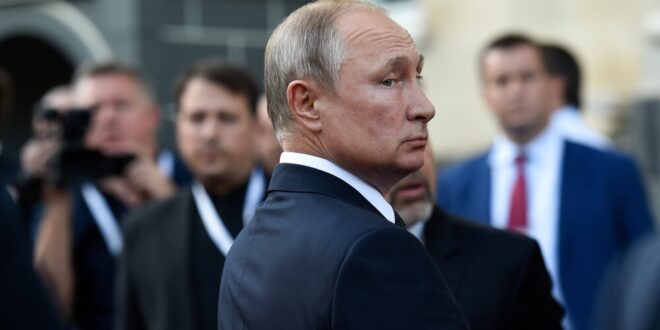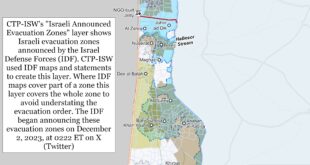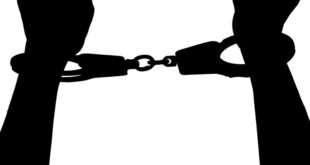Propaganda techniques aimed at shaping the perception of citizens also include the concealment of facts that do not support that propaganda. In this text Demostatus reflects on some of such historical truths.
The majority of Serbian citizens perceive Russia as a friendly country that stood by the Serbian people in key moments. For years, a myth has been built in Serbia about Russia as the protector of Serbia, a brotherly country that is our greatest friend, the country that helps us the most economically.
Russian opposition to the independence of Kosovo affects such attitudes of citizens, but it is also a fact that for years the authorities have encouraged such a mood and built a myth about invincible Russia and the powerful Vladimir Putin. They did this by spreading pro-Russian propaganda, but also by concealing the facts about Russia’s relationship with our country in recent history, which actually tell us that there is no love, but pure interest.
Fact 1: Russia imposed sanctions on Yugoslavia in the nineties
In the UN Security Council, Russia supported all the resolutions that imposed sanctions on the former Yugoslavia in the 1990s due to the wars in Croatia, Bosnia and Herzegovina and Kosovo. The first sanctions, which related to the ban on the export of weapons to the then SFRY, were introduced on September 26, 1991. Then, on May 30, 1992, the UN Security Council adopted Resolution 757 on the FRY, which imposed harsh sanctions on Serbia and Montenegro, which were designated as the main culprits for the war in Bosnia and Herzegovina. The last, third resolution followed at the end of March 1998. The UN Security Council adopted Resolution 1160 on the introduction of an embargo on arms exports to the FRY in order to support peace and stability in Kosovo. Russia, as a permanent member of the UN Security Council, in no case used the right of veto and prevented the introduction of sanctions.
By the resolution of May 1992, the signatory states undertake to prevent the importation into their territory of all goods originating from the Federal Republic of Yugoslavia, to deny permission to any aircraft to take off, land or fly over their territory, if it is scheduled to land or has taken off from territories of the FRY. With that resolution, it was decided that athletes cannot participate in sports events in the signatory countries, and scientific and technical cooperation and cultural exchanges were suspended.
In November of the same year, the UN Security Council passed Resolution 787, which condemns violations of international humanitarian law, prohibits the transshipment of crude oil, oil derivatives, coal, energy-related equipment, iron, steel and other metals, chemicals, rubber, vehicles , aircraft and engines of all kinds, and call on all countries to take all necessary steps to ensure that none of their exports are diverted to FRY.
It should not be reminded that these measures led to shortages of basic foodstuffs in Serbia, energy sources, medicines, and that they lowered the standard of living of the citizens of Yugoslavia and collapsed the Serbian economy.
Fact 2: Russia was among the first to recognize the independence of Montenegro in 2006
Russia is the third country in the world to recognize the independence of Montenegro, even before Serbia did. Montenegro and Serbia were part of the Federal Republic of Yugoslavia. The Montenegrin Parliament declared independence on June 3, 2006, after the citizens voted on May 21 in a referendum on the independence of the state. Seventeen years after the referendum, Montenegro is a member of NATO and on the way to becoming a member of the European Union.
By decree of the President of Russia, Vladimir Putin, dated June 10, 2006, Russia recognized the Republic of Montenegro as a sovereign and independent state, just seven days after the declaration of independence. Diplomatic relations between Moscow and Podgorica were established at the level of ambassadors. Russia did this before Serbia decided to recognize an independent Montenegro. Namely, 12 days after the declaration of independence of Montenegro, on June 15, Serbia recognized the existence of that country. On the same day, the then president of Serbia, Boris Tadić, informed his Montenegrin colleague that Serbia, based on the decisions of the assemblies of Montenegro and Serbia, recognizes the independence and full state sovereignty of Montenegro.
Since 1997, Montenegro has mostly had a pro-Western or pro-American government. However, the quick recognition of Montenegro’s independence by Russia was not a surprise for Montenegrin officials at the time, who said that Moscow clearly supports Montenegro’s orientation towards the European Union. At that time, Russian investments in Montenegro were more than welcome. After the declared independence of Montenegro, the Russians were one of the most important foreign investors. They were mostly interested in the mining sector and tourism, and they bought a significant number of real estate in the country, both as Russian companies and as individuals. According to some data, Russian citizens owned 40 percent of real estate in Montenegro in 2012.
And although Russia for a time supported the preservation of the state union, at the same time it developed special relations with Belgrade and Podgorica.
By the way, the Government of Iceland was the first to recognize Montenegro, and Switzerland would do the same right after it, writes Demostat .
Fact 3: Russia intensively armed Croatia during the war in the nineties
During the war in the former Yugoslavia in the 1990s, the Croatian army received weapons from Russia. With the approval of the former President of Russia Boris Yeltsin, 16,000 tons of weapons arrived in Pula and Krk via arms dealers on Russian transport planes, despite the embargo that was in force at the time. It is about two squadrons of fighter planes, several squadrons of transport and combat helicopters, anti-tank weapons, rockets, grenades, bombs. Russian officials deny this, stating that Russia has consistently complied with its international obligations, including those related to the embargo on the delivery of weapons to the conflicting parties during the 1991-1995 Yugoslav crisis. Then Yeltsin’s motive was money, but also the desire to please the West.
In particular, it should be noted that Croatia received part of the Russian-made S300 anti-aircraft missile defense system, which was shown at the parade before the Storm in the summer of 1995, with the aim of dissuading Belgrade from a possible intervention. That missile system had to arrive in Croatia with the approval of Russia. Official Belgrade and the public of Serbia during the war nineties had high expectations when it came to the acquisition of these weapons. However, Serbia has never been able to acquire the S300, a system that can shoot down all aircraft at heights of 20 to 27 kilometers, as well as at a distance of 200 kilometers.
Croatia, on the other hand, received the S300 system before the Storm, so it served as a psychological brake for the FR Yugoslavia air force. According to the claims of Zvonko Zubak, a Croatian businessman dealing in arms trade, who during the war was in a company that was the main supplier of arms to Croatia, the system was never repaid, so since 2001 he has been leading a court process with the state in which he is seeking payment, return or bargain.
Croatian media wrote that Croatian soldiers were trained on S-300 missile systems, and that the training was conducted by Russians and Belarusians. They also point out that weapons also came from Ukraine, and that Croatian helicopter pilots were allegedly trained by Belarusians.
Fact 4: In the early 2000s, Russia withdrew from Kosovo and Metohija
Four years after the capture of Slatina airport near Pristina in 1999, the Russians withdrew from Kosovo.
On May 5, 2003, the President of Russia, Vladimir Putin, made a decision to withdraw Russian peacekeeping forces from the territory of the former Yugoslavia. More than 600 soldiers and members of the Airborne Forces, who were in KFOR units, withdrew from the territory of Kosovo and Metohija by August 1. They were stationed in the municipality of Kosovska Kamenica, in the municipality of Srbica, as well as at the main Kosovo airport “Slatina” near Pristina, which they pompously occupied four years earlier. The Russians then withdrew from Bosnia and Herzegovina. According to the then chief of the General Staff, Anatoly Kvashnin, Russia no longer had strategic interests in the Balkans.
 Eurasia Press & News
Eurasia Press & News




